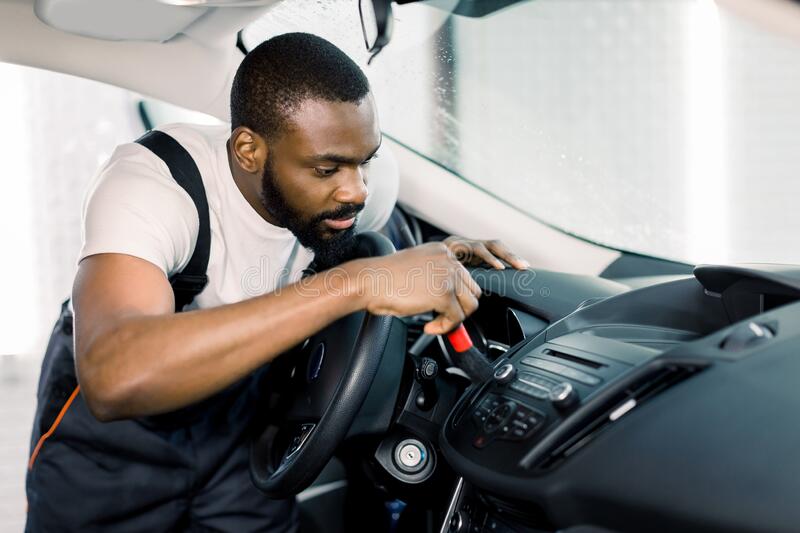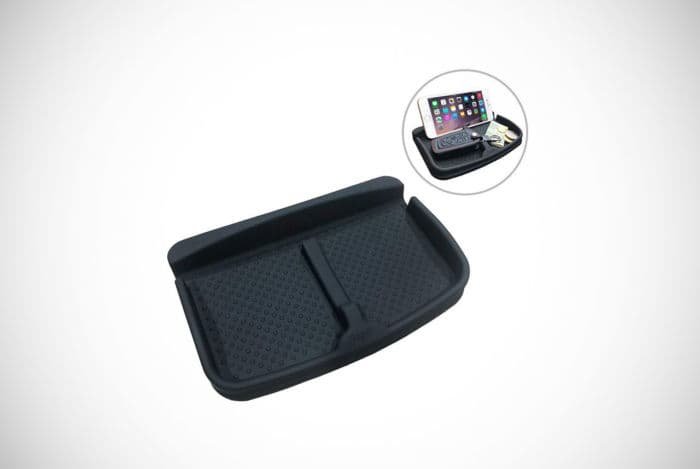
In the automotive industry, there is an axiom: No car that doesn't have a cup holder is going to sell, and that is certainly true in the US. Yet the driving public still seems to be against the idea. This is especially true in countries such as the unreconstructed Europe where cup holders are a big problem. Fortunately, the Hertella Auto Kaffeemachine provides an answer to this problem.
Fiat 500L
A coffee machine is not something you would find strange if it were to be found in your car. Fiat 500L was one of the first cars to offer this option, and it costs about PS200. Lavazza has created the "Espresso Experience", a kit that includes a specially-designed flagon and a heating element. Water flows through coffee pads and then collects in an upper reservoir. This is where you pour your coffee. Fiat is very excited about this little innovation. But will it be available in the UK as well?
Yes, the Fiat 500L will come with an espresso maker built in. This unique feature has been made possible by Fiat's partnership with Lavazza. The coffeemaker plugs into the power supply hidden between the front seats. You can enjoy a hot, piping hot cup on the go with the help of the included coffee maker. You will also receive a spoon and sugar holder. You will also need a small patisserie platter to place your coffee.

Lexus LM
There are a few things that you might like about a Lexus LM coffee maker car. It looks good. The LM is designed with a stylish, family-style spindle grille. This vehicle is sure to impress all your family members and friends. You can make your morning coffee right away with the automatic espresso maker. The LM is a great option if you're looking for a way to get your daily dose while driving.
The Lexus LM has been designed as a luxury executive vehicle. It is comparable to the Ford Transit Connect's long-wheelbase and can seat four people. This luxury executive vehicle is expensive so be prepared to pay more. It boasts a spacious cabin with an LCD screen of 26 inches and a chiller chamber. The LM includes two reclining rear-seats.
Volkswagen Beetle
The Barista Beetle is a unique concept coffee maker that draws inspiration from the iconic VW Beetle. It is built with a sliding wing cover, where you can insert coffee capsules or fill the built-in water tank. The sleek design is elegant and modern. This coffeemaker is great for anyone who loves classic cars and wants to add modern flair to their kitchen.
In the United States, it is highly unlikely that a car would be sold without cup holders. But that is not the case here in Europe. The Beetle comes with a coffee maker, which will satisfy coffee lovers' caffeine needs. The 1959 VW Bug's retro-style coffeemaker will fit right in its dashboard. If you are interested in learning more about the coffee maker's history, read on!

Lamborghini
You can find a coffeemaker that looks like a Lamborghini car if you're looking for an unusual gift this holiday season. The coffee maker features an in-car coffee maker, and is named after the legendary Italian car maker. The device can make a pot of coffee for you or brew a fresh pot of coffee for yourself. Only 1,000 units will be produced.
Also, the company offers 1,000 limited edition coffeemakers. These are handbuilt and decorated with the company’s bull logo. These coffee makers are $1750 USD and delivered directly to your home. You can order one of these coffeemakers now to avoid disappointment. There are many models available, but this model is the only one that's available.
FAQ
Is it important which college I go?
Non, really. There's no difference between colleges regarding getting into the automotive industry. However, some schools offer better programs than others so if you're looking for something more specialized, look elsewhere.
How long does an apprenticeship in automotive mechanics last?
It takes approximately three years to complete an automotive mechanic apprenticeship. This includes two year at school as well as two years as an apprenticeship. The first year of training is spent in the trade. This includes theory and practical skills as well as safety procedures. You'll also learn how tools can be used safely and efficiently during this year. After the first year, a second year will be spent on-thejob training. This year you'll get experience in different trades. You'll have the opportunity to attend formal courses during these periods too.
The last year of your program will be spent earning qualifications and becoming certified. These include NVQs (National Vocational Qualifications), which are awarded after passing exams covering specific topics within the industry. The HNCs (Higher National Certificates), on the other hand, cover general subjects like customer service and management. City & Guilds certificates can be obtained for individuals who want to learn certain trades.
What are the requirements of an auto technician?
You must have completed high school or GED with good grades in maths and English. Also, you must be able read and write. You will need to pass a written test and then go through a series of practical exams before being allowed to start work.
What qualifications do I need to become a mechanic?
To become a mechanic, you'll need to pass a series of exams. These exams include:
-
A general knowledge assessment
-
A practical exam
-
An apprenticeship test
These tests are designed to ensure that you understand the basic concepts of mechanical engineering and physics before you start working as a mechanic.
These tests will allow you to be a mechanic once you have passed them. However, you'll still need to complete an apprenticeship. This will involve training in your trade.
You'll need to attend classes and workshops to learn everything you need to know about repairing vehicles. You'll also have to work alongside experienced mechanics.
To be a successful mechanic, you will need to have a high degree of concentration and attention. Repairs to vehicles require you to pay attention to every detail.
To be a successful mechanic, patience and perseverance are essential. This may not be the career path that you want if you aren't able to follow directions.
However, if you love cars or enjoy working on them, you might be happy in this field.
How can I prepare for a apprenticeship as a mechanic?
Understanding what you're getting into is crucial. You need to understand the mechanics of cars and how they work. This will make it easy to find the right place to start your first day in the garage.
Also, you need to know how fix simple problems, such as tires and lights that aren't working.
This article will show you how to diagnose and fix issues.
You'll also need to know how different parts fit together to put them back together again.
Finally, it is important to know how tools can be used safely and efficiently.
All these aspects will help you become a competent technician.
Statistics
- According to the BLS, the median annual salary for automotive service technicians and mechanics in the United States was $44,050 in May 2020. (uti.edu)
- There were 749,900 jobs available for automotive service technicians and mechanics in 2016, which is expected to grow by six percent through 2026. (jobhero.com)
- Apprentice mechanics earn significantly less hourly than mechanics who have completed training, with a median wage of approximately $14.50 an hour, according to PayScale. (jobhero.com)
External Links
How To
How to properly diagnose your car for repair
Before you can determine if your car requires repairs, it's important to first analyze the symptoms. Next, you can follow these steps in order to diagnose your car.
-
Check engine lights. The dashboard light indicators, including the engine light, oil pressure gauge, battery light indicator, coolant temperature gauge and RPM gauge, should be checked. If any of them have been flashing for several days, it may mean something is wrong with your vehicle.
-
Examine the treads of the tires. Tires that are worn can cause issues with handling and braking. Also, inspect the treads of your wheels. They should be clean, and they should be smooth. The best way to do this is to remove the wheels and take them off. Use a flashlight to see how well the treads are worn.
-
Observe the brake fluid level. It is important to keep track of how much brake fluid you have in your car. This ensures that your brakes work properly. Low brake fluid levels could cause your brakes to fail when you apply pressure.
-
Test the suspension system. A suspension system is designed to absorb vibrations and shocks. It allows for better control, smooth acceleration, and deceleration. If your vehicle has a suspension problem, it might feel wobbly or shake uncontrollably. To determine whether your vehicle may have a suspension issue, you can try to put weight on the rear or front axle and watch the movement.
-
Examine the steering wheel. Steering columns are used to connect the steering wheel to the rest of the vehicle's components. The steering column can often be damaged by an accident. If yours feels loose or shaky, you should replace it.
-
Pay attention to the exhaust pipe. The exhaust pipes transport gases from the combustion chamber to outside. If your exhaust pipe leaks or cracks, it will allow harmful fumes into your cabin. Also, if your tailpipe is bent, you should fix it immediately.
-
Look under your hood. Take a look underneath the hood to find any strange or unusual items. You could have fluids leaking from the engine. If you smell something strange coming from your engine compartment you should call a professional technician.
-
Make sure to check the air filter. The air filter in your vehicle collects dirt and dust from the environment. A dirty filter can lead to a poor vehicle's performance. Replace your air filter regularly.
-
Check the fan belt. Your vehicle's fanbel connects the engine and transmission. If the fanbel breaks, your engine won't turn. It's easy to replace the belt. You only need a screwdriver or pliers to replace your belt.
-
Verify the radiator hoses. The radiatorhose carries water from your radiator to the engine. If the hose becomes damaged or cracked, hot liquid can be emitted onto the engine. The hose can be repaired with a pair or needle-nosepliers, and a wire brush.
-
Check the windshield wipers. Windshield wipers use electricity for snow and rain removal. They can leave streaks on your windows glass if they stop working. The solution is to change the washer fluid.
-
Make sure you check the cables. Your car's electrical system is powered by batteries. When you replace batteries, make sure to disconnect the negative cable first. Failure to do so can damage your alternator.
-
Make sure your headlights are working properly. Headlights are used to illuminate the road ahead. They can make it difficult to see if they stop working. Inspect the bulbs for signs of burnt out.
-
Be sure to check the lights. The lights are there to warn other drivers if they approach you at night. It could cause distraction and even lead to an accident if it doesn't work.
-
Check the brakes. Before you have a collision, brakes slow down your car. If your brakes aren't working properly, you may lose control and crash into other cars.
-
Check the oil regularly. Your engine will stay lubricated by the oil. It helps keep metal parts from getting too worn down. It is recommended that you change your oil at least once per month.